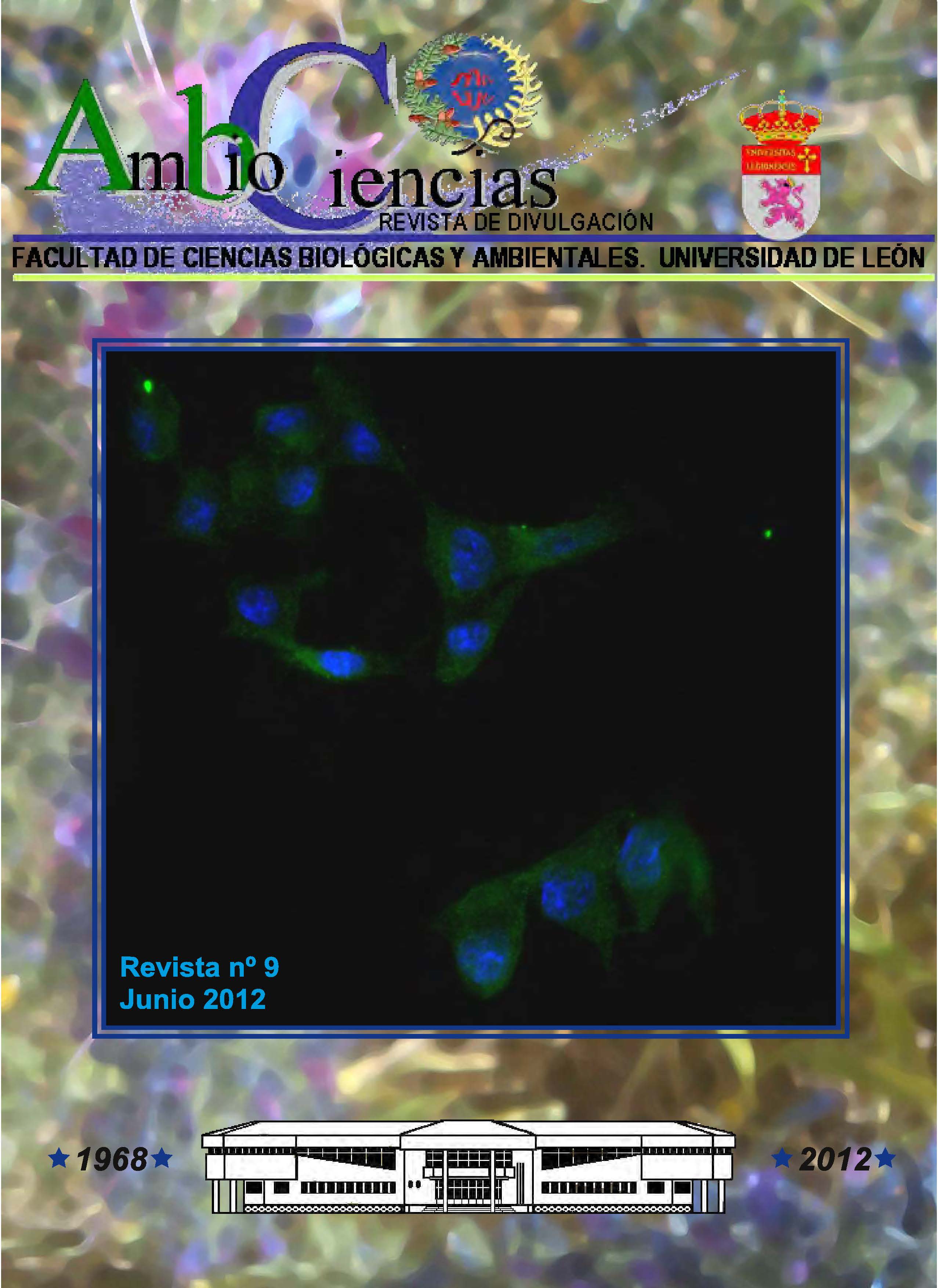Lynn Margulis (1938-2011): la bióloga con visión revolucionaria
DOI:
https://doi.org/10.18002/ambioc.v0i9.5511Abstract
En noviembre del año pasado (2011) moría repentinamente a causa de un derrame cerebral Lynn Margulis, una de las biólogas más influyentes de la historia de esta ciencia; tenía 73 años. La recordaremos siempre por su escelente labor como divulgadora científica a través de sus numerosos, rigurosos y excelentes libros. Pero sin duda pasará a la historia de la ciencia como la coautora y defensora de una de las teorías más provocativas, estimulantes e innovadoras en el campo de la biología, la teóría de la endosimbiosos seriada para el origen de las células eucariotas.Downloads
Riferimenti bibliografici
Copeland, H.F. (1956). The Classification of Lower Organisms. Palo Alto, CA: Pacific Books.
Kozo-Polyansky, B.M. (1924). Novyi printzip biologii. Ocherk teorii simbiogeneza. Puchina, Lenigrad. Moscow [Traducido al inglés en: “Kozo-Polyansky, B.M. 2010. Symbiogenesis: a new principle of evolution. Translation from the Russian by V. Fet (V. Fet y L. Margulis, eds.). Harvard Univ. Press, Cambridge”].
Lake, J.A. (2011). Lynn Margulis (1938-2011). Biologist who revolutionized our view of early cell evolution. Nature. 480:458.
Lovelock, J.E. (1972). Gaia as seen through the atmosphere. Atmospheric Environment. 6:579-580.
Lovelock, J.E. y Margulis L. (1974a). Homeostatic tendencies of the Earth´s atmosphere. Origins of Life and Evolution of Biospheres. 5:93-103.
Lovelock J.E. y Margulis L. (1974b). Atmospheric homeostasis by and for biosphere -Gaia hypothesis-. Tellus. 26:2-10.
Maynard Smith. J. y Szathmáry, E. (1999). The Origins of Life: From the Birth of Life to the Origin of Language. Oxford: Oxford University Press.
Merechowsky, M. (1910). Cell in Development and heredity (EB Wilson, ed) MacMillan, NY.
Margulis, L. (1970). Origin of Eukaryotic Cells: Evidence and Research of Implications for a Theory of the Origin and Evolution of Microbial, Plant and Animal Cells on the Precambrian Earth. Yale University Press.
Margulis, L. (1998). Symbiotic Planet, Sciencewriters, Massachusetts [Traducido como “Planeta Simbiótico. 2002. Un nuevo punto de vista sobre la evolución. Ed. Debate”].
Margulis, L. (2010). Symbiogenesis. A new principle of evolution rediscovery of Boris M. Kozo-Polyansky (1890-1957). Paleontological Journal. 44:1525-1539.
Margulis, L. y Sagan, D. (1986). Origins of Sex. Three Billion Years of Genetic Recombination, Yale University Press.
Margulis, L. y Sagan, D. (2002). Acquiring genomes: a theory on the origin of species, Basic Books [Traducido como “Captando genomas. 2003. Ed. Kairos”].
Margulis, L. y Sagan, D. (2007). Dazzle Gradually: Reflections on the Nature of Nature, Sciencewriters Books.
Margulis, L. y Schwartz, K.V. (1982). Five kingdoms: an illustrated guide to the phyla of life on earth, New York: WH Freeman. [Traducido como “Cinco reinos. Guía ilustrada de los phyla de la vida en la Tierra. 1985. Editorial Labor”].
Plaut, W. y Sagan, L. (1958). Incorporation of thymidine in the cytoplasm of Amoeba proteus. Journal of Biophysical and Biochemical Citology. 4:843-847.
Properzio, J. (2004). Lynn Margulis. Full speed ahead. University of Chicago Magazine.
Schwartz, R.M. y Dayhoff, M.O. (1978). Origins of prokaryotes, eukaryotes, mitochondria, and chloroplasts. Science. 199:395-403.
Sagan, L. (1965a). An unusual pattern of tritiated thymidine incorporation in Euglena. Journal of Protozoology. 12:105-ss.
Sagan, L., Ben-Shaul, Y., Epstein, H.T. y Schiff, J.A. (1965b). Studies of chloroplast Development in Euglena XI. Radioautographic Localization of Chloroplast DNA. Plant Physiology. 40:1257-1260.
Sagan, L. (1967). On origin of mitosing cells. Journal of Theoretical Biology 14:225-274.
Sampedro, J. (2002). Deconstruyendo a Darwin. Ed. Crítica, Barcelona.
Schaechter, M. (2012). Lynn Margulis (1938-2011): Retrospective. Science. 335:302.
Taylor, F.J.R. (1974). Implications and extension of the serial endosymbiosis theory of the origin of eukaryotes. Taxon. 23:229-258.
Wallin, I. (1927). Symbionticism and the origin of species. London: Blliere, Tindall & Cox.
Whittaker, R.H. (1959). New concepts of kingdoms of organisms. Evolutionary relations are better represented by new classifications than by the traditional two kingsdoms. Science. 163: 150-160.
Whittaker, R.H. y Margulis, L. (1978). Protist classification and the kingdoms of organisms. Biosystems. 10:3-18.
Wier, A.M., Sacchi, L., Dolan, M.F., Bandi, C., McAllister, J. y Margulis, L. (2010). Spirochete attachment ultrastructure: implications for the origin and evolution of cilia. Biological Bulletin. 218:28-35.
Downloads
Pubblicato
Come citare
Fascicolo
Sezione
Licenza
Copyright (c) 2018 Antonio Encina García

Questo lavoro è fornito con la licenza Creative Commons Attribuzione - Non commerciale - Condividi allo stesso modo 4.0 Internazionale.
Los autores que publican en esta revista están de acuerdo con los siguientes términos:
- Los autores ceden de forma no exclusiva los derechos de explotación (reproducción, distribución, comunicación pública, transformación) a la Universidad de León, por lo que pueden establecer, por separado, acuerdos adicionales para la distribución no exclusiva de la versión de la obra publicada en la revista (por ejemplo, alojarlo en un repositorio institucional o publicarlo en un libro), con un reconocimiento de su publicación inicial en esta revista.
- Este trabajo se encuentra bajo la Creative Commons Attribution-NonCommercial-ShareAlike 4.0 International License. Puede consultarse desde aquí la versión informativa y el texto legal de la licencia.
- Se permite y se anima a los autores a difundir electrónicamente las versiones pre-print (versión antes de ser evaluada) y/o post-print (versión evaluada y aceptada para su publicación) de sus obras antes de su publicación, ya que favorece su circulación y difusión más temprana y con ello un posible aumento en su citación y alcance entre la comunidad académica.







